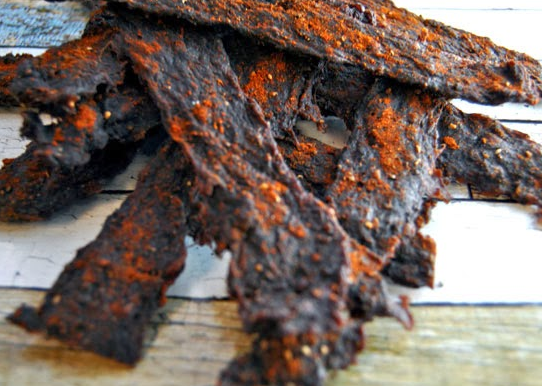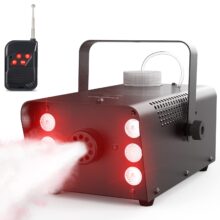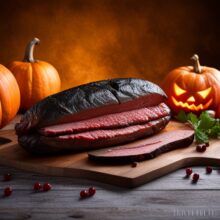Adjusting Venison Jerky Temperature

Jerky is a tasty and easy way to preserve your venison. But it’s also a risky food because it can be contaminated with harmful bacteria.
To make sure your jerky is safe, you need to know the proper temperature for drying it. That will help eliminate harmful bacteria and keep your jerky fresh for longer.
What Temperature is Safe and Optimal?
Venison is an extremely lean, nutrient-rich meat that can be made into tasty jerky. It is also light and easy to take on a hike or camping trip and makes a great snack on the go.
When making jerky, it is important to ensure the venison is properly prepared before you begin. This will prevent foodborne illness and keep the venison safe for you to eat.
The USDA Meat and Poultry Hotline recommends heating meat to 160 degrees Fahrenheit (or 165 degrees for poultry) before dehydrating it. This helps to destroy harmful bacteria that can be found in raw venison.
Cut venison into small strips that are no more than 1/4 inch thick. Spread them on trays for dehydrating or cake racks for oven drying, arranging them closely together but not touching each other.
Dehydrator Temperature
Most dehydrators are set at a certain temperature, but there are some that have an adjustable dial. Adjustable models are useful if you’re dehydrating several different types of foods, or want to be more precise during the drying process.
Generally, the USDA recommends that all meats be heated to 160 degrees F (70 degrees C) before they are placed into a dehydrator. This step assures that any bacteria present will be destroyed by the heat from the dehydrator.
After the meat has been heated, it is then placed into a dehydrator with racks to dry. Some dehydrators have a thermometer to measure the temperature, which makes it easier to know when the jerky is finished.
Venison jerky should be dry and slightly brittle when it is ready. To test the jerky, pick it up and try to bend it. It should bend easily, but not break when you apply light pressure to it. If it breaks, then it’s overcooked and needs more time to dry.
Oven Temperature
The oven temperature is a critical component in making venison jerky. A low drying temperature (145 degrees Fahrenheit or lower) is needed to remove the moisture that can cause jerky to spoil.
To ensure your dehydrator or oven is producing the proper temperature, test the temperature with a bi-metallic stem food thermometer before placing the meat in the dehydrator. This is an important step for ensuring your jerky will be safe to eat and not contain any pathogens.
To make venison jerky, slice a piece of trimmed venison into strips that are at least one-quarter inch thick or thinner. Place the strips flat on clean dehydrator trays or oven (wire) racks and dry at 145oF for 10 to 14 hours. Check for dryness by removing a strip and testing it: It should crack, but not break when bent.
Smoker Temperature
Venison jerky is a low-fat meat product that is relatively easy to make. It has 40 percent fewer calories and 50 percent less fat than beef jerky.
The key to safely smoking venison jerky is using the right smoker temperature and keeping an eye on the jerky as it smokes. A good food thermometer is a must for jerky and will allow you to check the internal temperature of the jerky as it cooks and finishes.
Before putting jerky on the smoker, cut it into long strips (about 1/4 inch thick). Season both sides with all the ingredients in your marinade.
Related Articles
How to Prepare Venison For Jerky
Venison Jerky – Why Use a Dehydrator?
Popular Venison Jerky Seasonings
How to Make the Best Venison Jerky Recipe
Adjusting Venison Jerky Temperature
Read more great BBQ articles at Bob’s BBQ Secrets


